Table of Contents
Table of Contents
Dahlia Varieties – Understanding Different Types of Dahlia Flower Classifications and Formations
Dahlia flowers are a dazzling showcase of nature’s artistry, celebrated for their incredible variety in shapes, colors, and sizes. Native to Mexico and Central America, these stunning blooms have captured the hearts of gardeners worldwide. From large, layered petals to perfectly rounded pompons, every type of dahlia brings a distinct beauty and texture to the garden. With over 40 species and more than 50,000 registered hybrids, the diversity of dahlia varieties seems endless.
This wide range exists because dahlias are highly hybridized plants. Over time, growers have developed new forms through crossbreeding—creating flowers that vary in petal shape, bloom size, and growth habit. As a result, dahlias are now divided into several main classes that help gardeners identify their style and characteristics more easily. These classifications include decorative, pompon, cactus, semi-cactus, anemone, collarette, mignon, single, peony, orchid, and waterlily dahlias. Each form displays unique petal structures and vibrant hues, offering endless possibilities for floral displays and garden designs.
Among these groups, decorative dahlias are known for their large, layered petals that resemble lush rosettes, while pompon and ball dahlias are admired for their tight, round blooms that stay perfectly shaped even after cutting. Cactus and semi-cactus dahlias feature long, pointed petals that curve outward, adding dramatic flair to any flower bed. The anemone and collarette dahlias have a playful structure with central discs surrounded by shorter petals, creating a textured, eye-catching look. For smaller spaces or container gardens, mignon and single dahlias provide cheerful color with simple petal arrangements. Meanwhile, peony, orchid, and waterlily dahlias mimic the elegance of other beloved blooms, blending soft, rounded forms with a classic floral silhouette.
Understanding these dahlia varieties helps gardeners plan vibrant, well-balanced flower beds that bloom from mid-summer to the first frost. No matter the form or size, dahlias bring a burst of life and color to every garden, making them one of the most rewarding flowers to grow and admire.
Decorative Dahlias
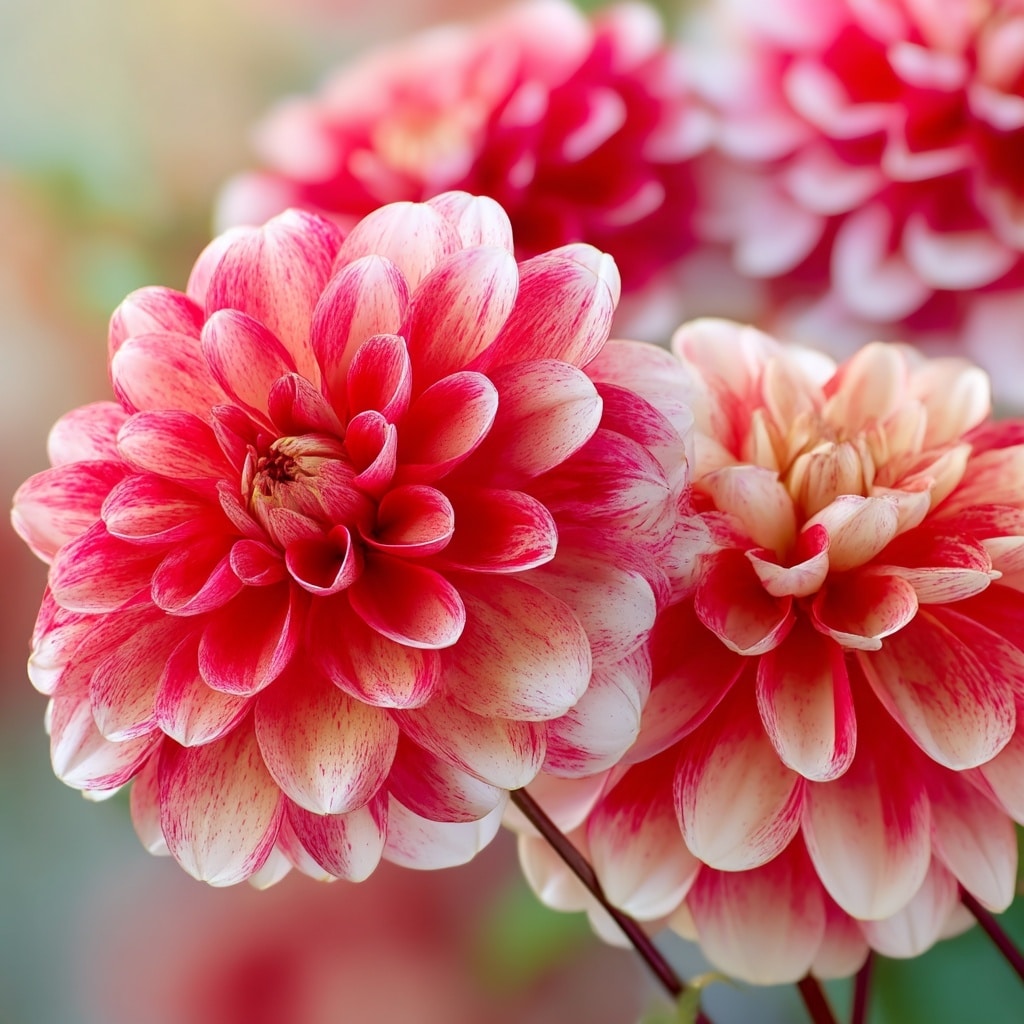
Among all dahlia varieties, decorative dahlias are the most well-known and widely grown. Their lush, layered petals form large, round blooms that instantly draw attention in any garden or bouquet. These flowers come in two main subcategories—formal decorative and informal decorative—each with its own distinct style.
Formal decorative dahlias have perfectly symmetrical petals that are broad and flat, neatly arranged in a tight pattern. Their uniformity gives them a polished, elegant appearance, making them popular for floral displays and competitions. In contrast, informal decorative dahlias feature slightly curved or irregular petals that give the bloom a more natural, relaxed look.
These types typically grow on tall stems, producing blooms ranging from 4 to 10 inches in diameter. They thrive in full sun and well-drained soil, rewarding gardeners with continuous blooms throughout the summer. Popular varieties include ‘Arabian Night’, known for its velvety deep-red petals, ‘April Dawn’ with creamy pink tones, and ‘Mystery Day’, which displays stunning magenta petals edged in white.
Pompon and Ball Dahlias

Compact and perfectly round, pompon and ball dahlias are prized for their symmetry and long vase life. Their petals are tightly arranged in a spiral pattern, curving inward to create a smooth, globe-like shape. The difference between the two lies mainly in size: pompon dahlias are smaller, typically 2 inches wide, while ball dahlias can reach up to 4 inches.
These flowers are ideal for cutting gardens and borders because they hold their shape well even after harvesting. Their spherical blooms add texture and structure to arrangements, complementing larger varieties. Common examples include ‘Jowey Winnie’ with its soft peach-pink hue, ‘Franz Kafka’ known for rich lilac tones, and ‘Marble Ball’, featuring elegant white petals streaked with pink or purple.
Cactus and Semi-Cactus Dahlias
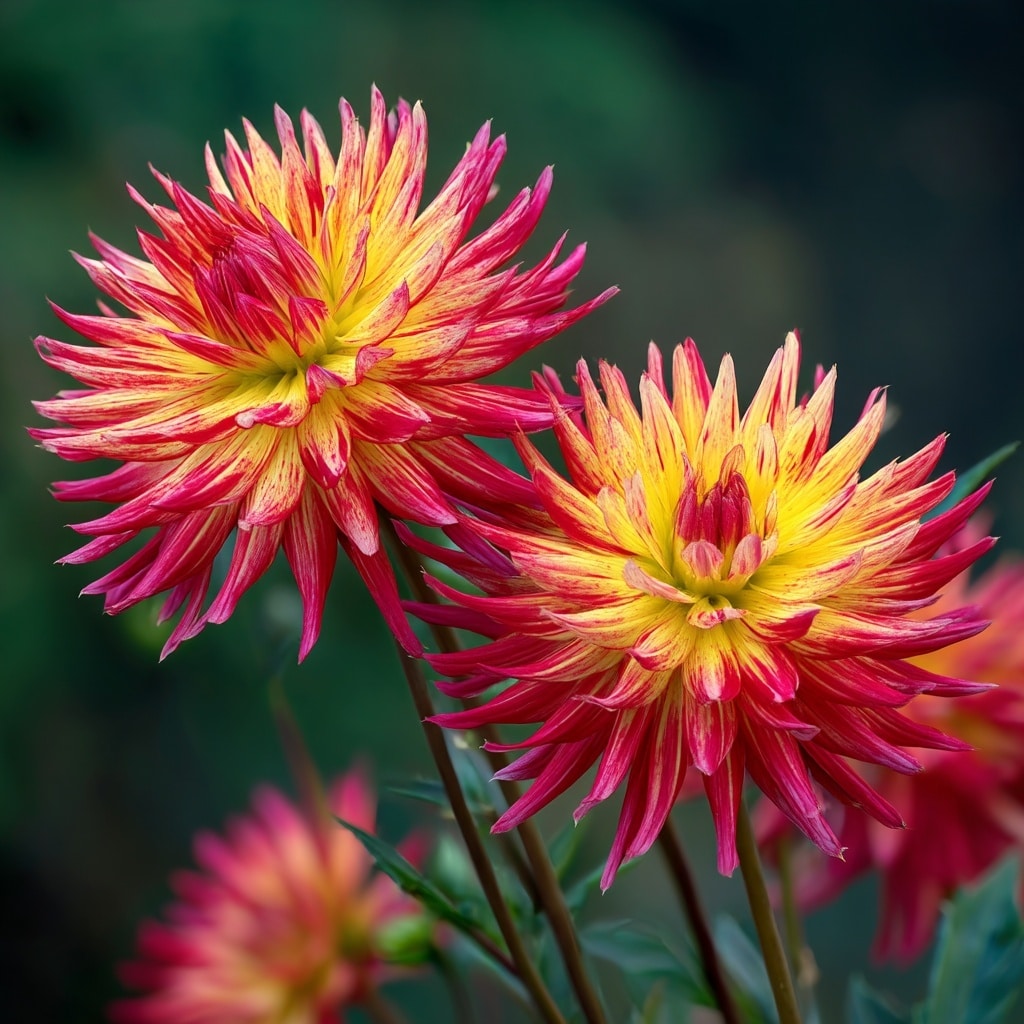
Cactus dahlias are famous for their spiky, starburst appearance. Their long, narrow petals roll back to create a dramatic, sculptural bloom that looks almost like a fireworks display in flower form. The semi-cactus types share this flair but have slightly broader petals that curve more gently outward.
These dahlias are excellent for adding texture and height to gardens. The sharp petal shapes create striking contrasts with softer flowers nearby. Popular cultivars include ‘Bridge View Aloha’ with fiery red and yellow petals, ‘Dutch Explosion’, a vivid purple variety, and ‘My Love’, which produces creamy white blooms with soft yellow centers.
Anemone and Collarette Dahlias

Delicate and whimsical, anemone and collarette dahlias have a distinctive layered look. Anemone dahlias feature a dense cluster of tubular petals in the center, surrounded by a ring of flat outer petals. Collarette dahlias, on the other hand, have a single layer of large outer petals encircling a smaller inner ring that resembles a collar—hence their name.
These dahlias often attract pollinators due to their open centers. They come in various colors, from bright reds to pastel pinks and yellows. Notable varieties include ‘Night Butterfly’, with crimson petals and a creamy collar, and ‘Que Sera’, known for its striking magenta shades.
Mignon Dahlias
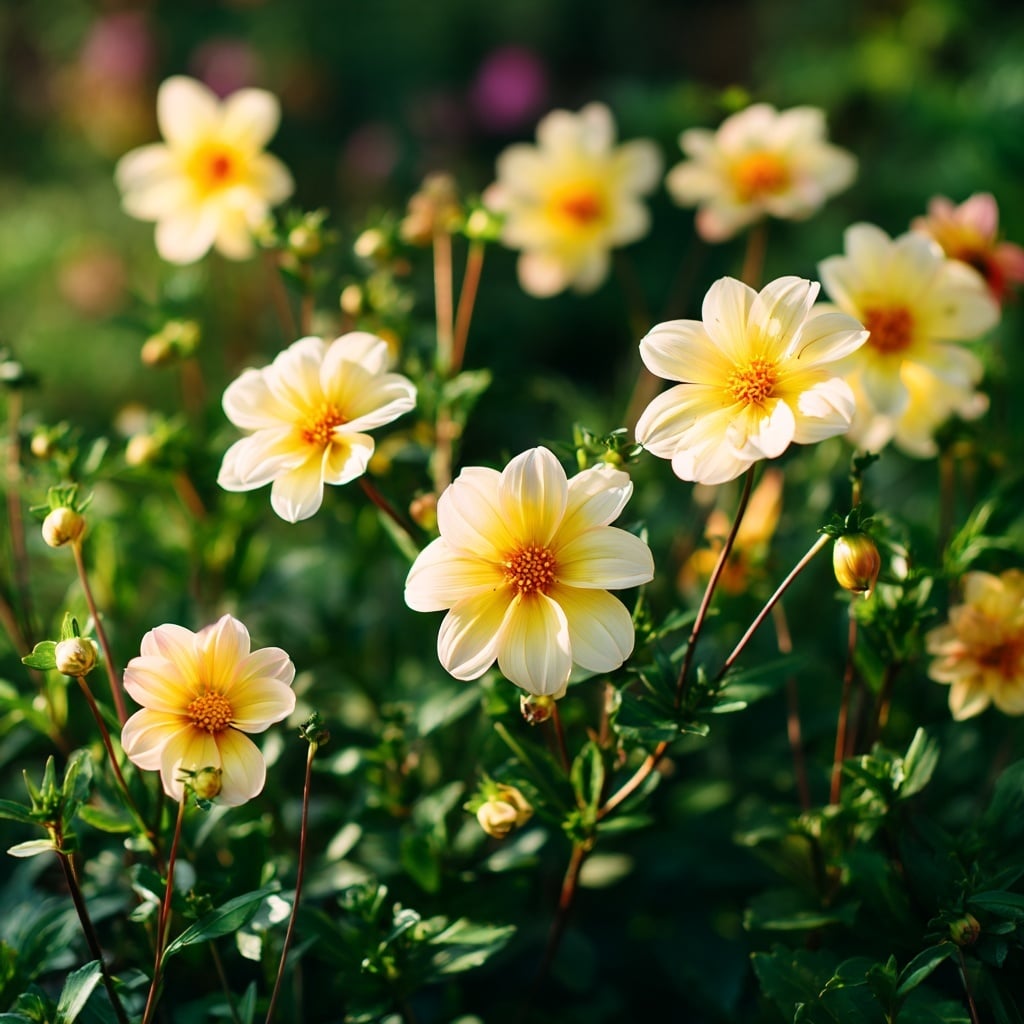
Mignon dahlias are compact, cheerful, and perfect for small gardens or containers. Their blooms are typically single with about eight rounded petals and a visible yellow center. Although small—usually under 2 inches—they pack plenty of charm and color.
They thrive in borders, window boxes, and patio pots, adding splashes of brightness all summer long. Varieties like ‘Scura’ with deep red petals and ‘G.F. Hemerick’ with golden-orange hues are particularly popular for edging garden beds and pathways.
Single Dahlias
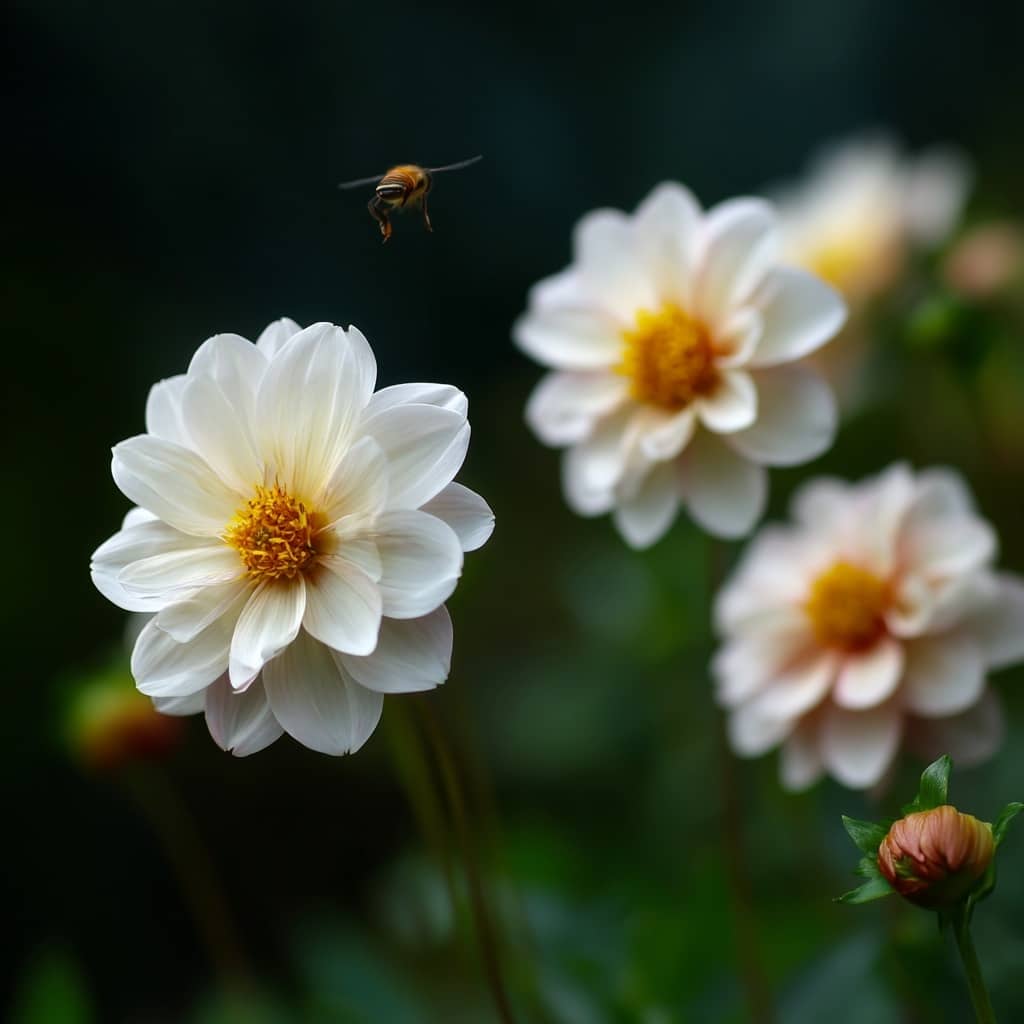
Simple yet elegant, single dahlias feature one row of petals surrounding a central yellow disc. Their open shape makes them especially attractive to bees and butterflies. Despite their minimalist form, single dahlias are available in a stunning range of colors, from pure white and soft pinks to bright oranges and purples.
They’re easy to grow, low-maintenance, and perfect for naturalistic garden designs. Favorites among gardeners include ‘Sunshine’, with vivid yellow blooms, and ‘Happy Single Wink’, a striking pink variety with dark foliage that provides beautiful contrast.
Peony and Orchid Dahlias
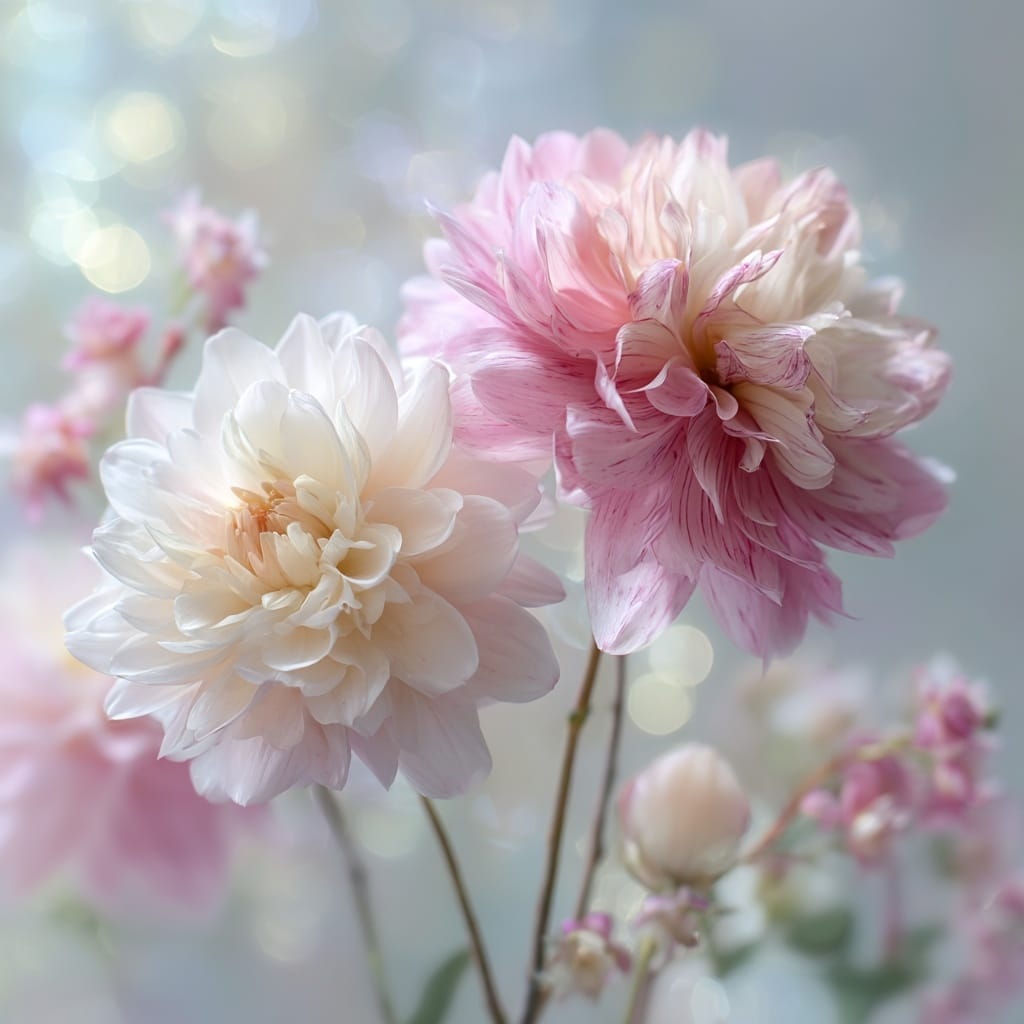
As their names suggest, peony and orchid dahlias resemble the blooms of peonies and orchids. Peony dahlias feature multiple rows of petals that gradually open around a central disc, giving a soft, ruffled look. Orchid dahlias, on the other hand, have narrow petals that twist or curl to one side, giving them an exotic flair.
Both types are prized for their unique forms and pastel hues, often used in floral arrangements to add grace and lightness. Notable varieties include ‘Classic Elise’, a delicate pink peony-style dahlia, and ‘Pink Giraffe’, a playful orchid type with thin, curled petals tipped in white.
Waterlily Dahlias

Elegant and symmetrical, waterlily dahlias feature broad, slightly cupped petals that overlap neatly to form a bloom resembling a true waterlily. Their soft, rounded petals give a delicate and romantic appearance, making them favorites for weddings and decorative displays.
They’re moderately sized (4 to 6 inches across) and often appear in gentle pastel tones such as pink, lavender, or creamy white. Two standout examples are ‘Karma Prospero’, a dreamy lavender-pink variety, and ‘Karma Choc’, which boasts deep burgundy petals with a luxurious velvet finish.
Conclusion
From the bold geometry of cactus dahlias to the soft charm of waterlily blooms, every dahlia variety offers its own story and visual delight. Understanding these classifications helps gardeners choose the right forms to complement their space and style. Whether you grow them for cut flowers, borders, or container displays, dahlias guarantee a spectacular show of color that lasts until the first frost.

